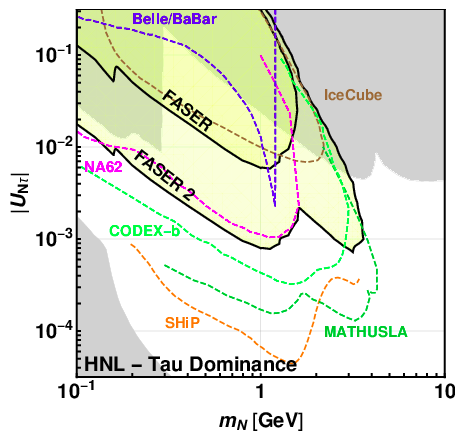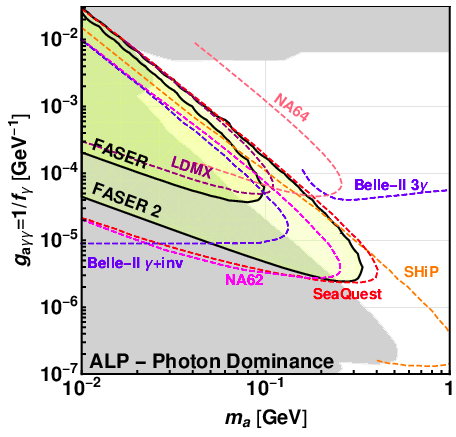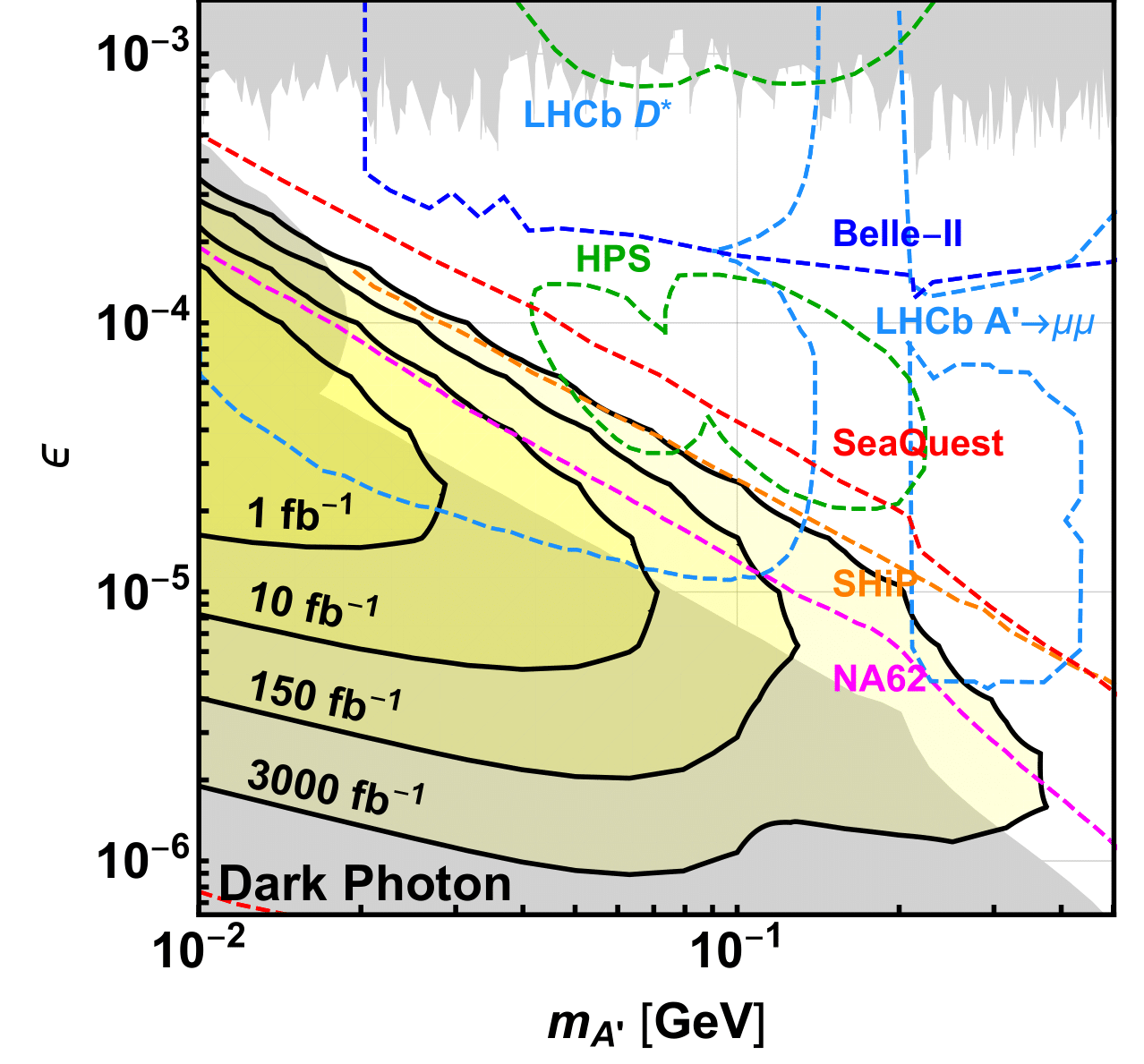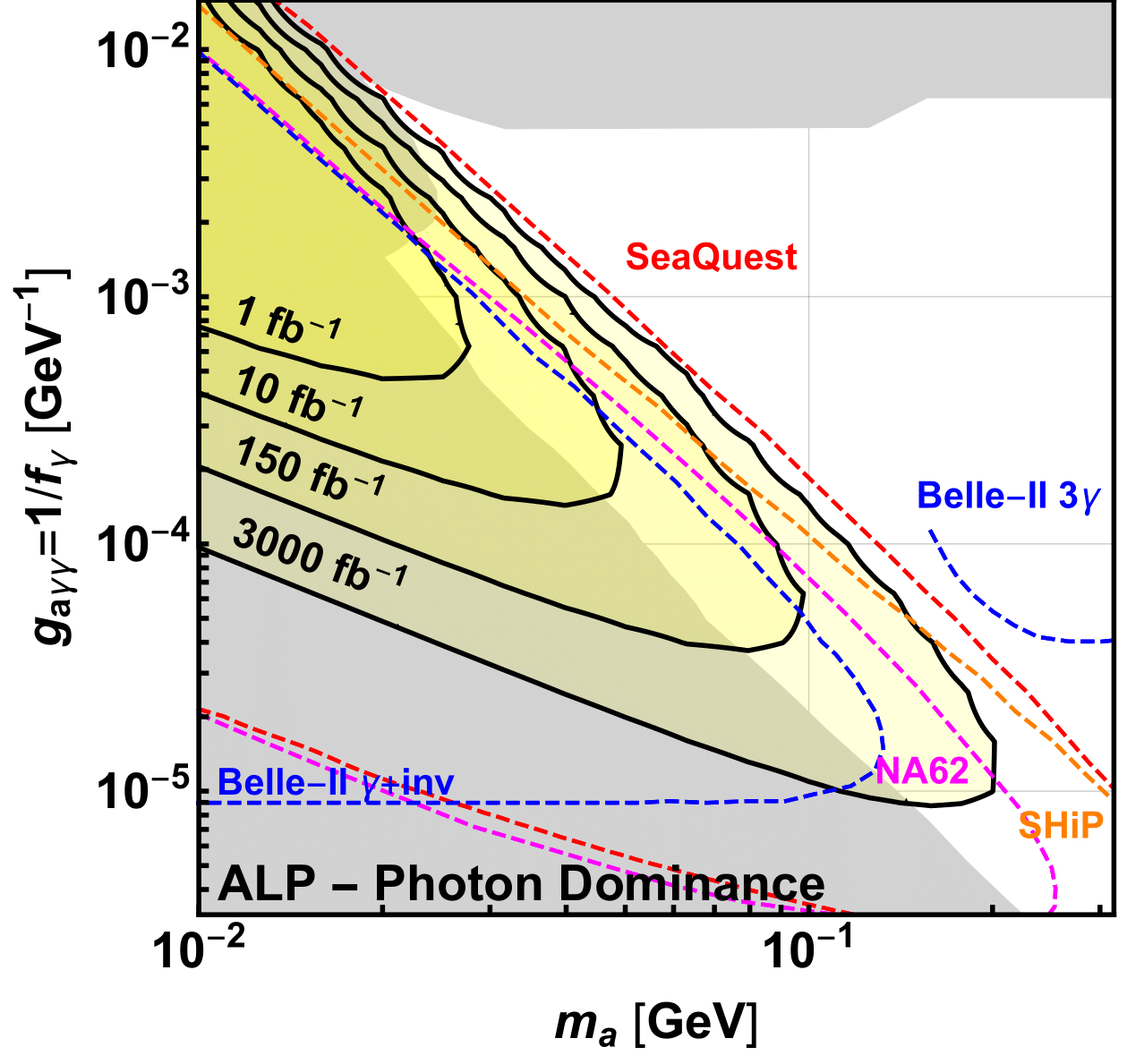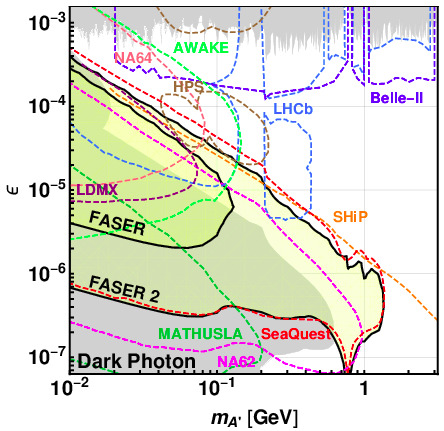
FASER searches for highly displaced signals from light and extremely weakly interacting particles that can be copiously produced in proton-proton collisions at the LHC. The existence of such new particles beyond the Standard Model (BSM) of elementary particles is a core theoretical prediction of many models of fundamental interactions trying to solve some of the biggest mysteries of contemporary physics. The open questions include understanding the nature of dark matter, the origin of neutrino masses, and relative asymmetry in matter and anti-matter abundances in the Universe. FASER puts theoretical ideas proposed to solve these puzzles into an experimental test, and map some of the most interesting regions in the landscape of new physics. This will either confirm the theoretical predictions and allow to claim new exciting discoveries, or partially exclude them and help to navigate future searches in the field.
FASER is searching for light long-lived particles (LLPs) that are produced at or close to the ATLAS interaction point (IP), move along the beam collision axis line of sight (LOS), and then decay within the volume of FASER into visible decay products:
pp → LLP + X, LLP travels ~480 m, LLP → charged tracks + X.
LLPs can also be produced once Standard Model particles hit the TAN neutral particle absorber located ~140 m away from the ATLAS IP in the forward direction. Basic information about FASER phenomenology studies can be found below.
LLPs produced in the very forward region of the beam collision axis typically have very high energies E ~ TeV. Although the identity of the LLP decay products depends on the mass of the LLP and the concrete new physics model, a characteristic signature is expected of two or more stable charged particles, such as electrons, muons or pions. This leads to a striking signature at FASER: two oppositely charged tracks with very high energy that emanate from a vertex inside the detector and which have a combined momentum that points back to the ATLAS IP.
FASER (and its proposed successor FASER 2) are sensitive to such decay signatures from a large number of long-lived particle models. These include i.a. all of the renormalizable portal interactions allowing for the possible production of dark photons, dark Higgs bosons, and heavy neutral leptons (HNLs). Additionally, FASER and FASER 2 are sensitive to axion-like particles (ALPs) coupled dominantly to photons, fermions, and gluons through non-renormalizable operators as well as pseudoscalars with Yukawa-like couplings. FASER and FASER 2 have a full physics program with discovery sensitivity in all of these models and potentially far-reaching implications for particle physics and cosmology.
Figures 1, 2 and 3 show the expected sensitivity reach of FASER to dark photons, HNLs with a dominant mixing with the tau neutrino, and ALPs with the dominant coupling to two photons belonging to the benchmark models defined by the CERN Physics Beyond Colliders (PBC) study group. Here we assume that backgrounds are reduced to negligible levels. The gray-shaded regions of parameter space have already been excluded by previous experiments. Combined, these results show the significant potential for FASER to extend the LHC's discovery reach. For comparison we also show the projected reaches of other proposed experiments that search for long-lived particles.
Dark photons are mainly produced in the decay of light mesons or via dark bremsstrahlung, resulting in them being very collimated around the beam collision axis. Even as a small detector of radius 10 cm and length 1.5 m, FASER is able to probe large and unconstrained regions of parameter space, making dark photons an ideal short term goal for FASER. In contrast, HNLs define a good long-term physics goal, as they are produced mainly in heavy meson decays, leading to a larger spread around the beam collision axis. Therefore, a larger (but still relatively small) detector of radius ~1 m is then required to exploit the full potential of FASER.
ALPs with dominant diphoton couplings are an example of the LLP model for which the FASER sensitivity is mostly associated with the LLP production in the TAN neutral particle absorber. Such ALPs can be effectively produced in the Primakoff process when high-energy photons originating from the ATLAS IP hit the TAN. Since these ALPs effectively inherit momentum of the incident photons, they are naturally boosted towards FASER and highly collimated along the beam collision axis LOS. Details of the related physics have been extensively discussed here.
Importantly, FASER starts probing unexcluded regions of the parameter space of popular models with LLPs immediately after LHC Run 3 begins in 2022. In particular, Figures 4 and 5 show the FASER sensitivity reach in searches for dark photons and axion-like particles with dominant diphoton coupling that correspond to only 1 fb-1 and 10 fb-1 of the integrated luminosity and compare it with the expected sensitivity for 150 fb-1, which is the full integrated luminosity expected to be collected in Run 3 from 2022 to 2025.
A more detailed discussion of the FASER BSM programme is given in the FASER's Physics Reach study, as well as in other publications about FASER's phenomenology listed here.
If you are interested in studying FASER's physics potential, please consider the following two benchmark geometries for FASER's decay volume:
FASER: radius R = 10 cm, lenght D = 1.5 m, luminosity L = 150 fb-1,
FASER 2: radius R = 1m, lenght D = 5 m, luminosity L = 3 ab-1.
Please also feel free to contact FASER theorists — we are happy to assist and answer your questions.

